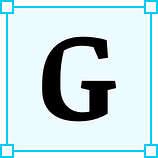Finding time: how to increase heads-down time to design
 Good design derives from good thinking. And good thinking is highly correlated to how much time you spend. In every place I’ve been though, every designer seems to be thirsty for more time to design. Why does this happen, to a point where it feels like a universal constant? Looking back across organizations and projects, here’s a set of patterns I’ve observed. Any of these sound familiar?
Good design derives from good thinking. And good thinking is highly correlated to how much time you spend. In every place I’ve been though, every designer seems to be thirsty for more time to design. Why does this happen, to a point where it feels like a universal constant? Looking back across organizations and projects, here’s a set of patterns I’ve observed. Any of these sound familiar?
Repeating observations
- Meetings unblock progress, but also interrupt progress.
- From picking up the cursor, each person takes different amount of time to immerse themselves and get creative.
- Sum of time blocks spread apart≠ Same amount of time in a single block.
- Designers are scarce in many organizations — Partners can be demanding with deadlines and your expertise.
- Many designers desire to be present at high level conversations — and this often leads to holistic thinking in the design.
- Plans change suddenly. Big changes in context can nullify the work done so far and have designers to go back to step 1.
- Despite the lack of time, you want to deliver a kickass design that will wow and excite the team.
Tried but meh
Unfortunately, this isn’t news and we’ve all tried something. Here’s some I’ve tried, found to be a common practice by others, and end up ineffective over time.
- No meeting Wednesdays
Hard to enforce. Urgent meetings come up. Sometime compromised to find a time that works for everyone. - Not going to meetings
Meeting minutes lack certain context, ideas evolve during real-time conversations, I prefer to be present in discussions that relate to design or that design has a perspective in. - 9–5 for making myself available to others, and designing before & after
Not sustainable nor productive long-term. Also prevents you from spending your core energy on design — you end up using left-over energy when heads-down - Pushing back on deadlines
Works well in certain cases, but often dependent on external factors such as launch roadmap and engineering resources. Not something that’s within your control all the time.
Focus on what’s actionable
Sometimes, you have to fight for time to do work. Feels odd as I am writing this, because you are compensated by impact from the work you do and the designs you create. In this sense, characteristic of an ideal workplace could be one where you are given enough space to drill down.
Start with what’s in your control and what you can take action on. Make yourself enough space to drill down on design by
- Owning your creative time
- Putting up a ✋ sign with context
- Calibrating expectations
1. Owning your creative time
They say Warren Buffett keeps most of his days meeting free. Easier said than done for most of us, especially when there are new requests throughout the day and pressure to accommodate big groups.
What you can do is setting a set of principles to systematically assess which meetings really matter, and then find the best time for them. Then, save rest of the day for thinking and executing design.
Know when you get your best creative energy flowing
Identify at least one block per day. That’s what you want to maximize and not have compromised with interruptions. Plan the day around it, and find ways to add more time around it to build stronger focus.
Triage with yes-or-no questions
If you can’t answer yes to any of the following questions, discard it or delegate the meeting.
- Will the outcome of this meeting change direction of the design?
- Do you need to share input in this meeting?
- Do you need be a mandatory decision maker in this meeting?
- Gut check — Will it be hard for you the accept the results of the meeting if you aren’t present in the conversation?
Push out, Combine, and Postpone
For the meetings you commit to, propose and shift times so that
- …they are as far away from your creative time block as possible.
- …there will be fewest fragments of adjacent meetings.
- …they happen as late as possible. Effective discussions happen when sufficient context is built up for everyone & you have bandwidth the follow through afterwards. This doesn’t always mean scheduling ‘as soon as possible’. Determine when that is and postpone until then. That can help avoid adding unnecessary noise.
2. Putting up a ✋ sign with context
Spontaneous distractions can be deadly when not managed well. Anything can be considered a distraction if it’s not relevant to the design you are heads down on. After all, focus is a fragile thing. And with the recent shift towards distributed teams and online communication, managing distractions has become more important than ever.
It’s shown to be effective for many people when they don’t react to every notification, but carving out specific time blocks to catch up on new messages and email. Some even suggest turning off notifications entirely and instead checking your messages hourly.
Design a sign with context
Take a step further by allowing
others to see what your priorities are right now. This is different from avoiding work, and people can then determine how timely it is for them to break your workflow. It’s similar to how people get a sense of how occupied you are by seeing you in meetings or being heads-down. Designing a sign to show this can help trim the intake of interruptions.
For a sign to be effective, it’s important to
- clearly communicate what’s on top of your plate right now,
- when you expect to be back,
- when you check back on messages,
- and a way to reach you for urgent items.
For example:
Heads down on P0, P1 items, and back on Slack at noon. For items time critical items, please call me.
Communicate these through status updates or even autoreplies. There’s even been experiments around composing autoreplies based on knowledge to tackle trivial replies on your behalf.
3. Calibrating expectations
Everyone has a different way of working and quirks that directly impact their output. Make it a culture to share what these are, learn about each other, and calibrate expectations with your team. No individual or team is exactly the same.
What matters is sharing an honest picture and finding a fit to best work together — an honest picture includes both positive and negative traits. Here’s a number of aspects I’ve found helpful to share when finding that fit.
- What you find helpful to iterate on design
- Your work rhythm
- How frequently you check each communication channel
- Areas you know you can improve in
- Quirks that may cause a misunderstanding
Here’s an interactive template you can use with your team to learn about each other and build towards a team working style.
It’s a constant struggle to find a balance between heads-down time to design and heads-up time for everything else. That’s because heads-up time also helps us see beyond what’s right in front of our eyes and feed back into what we design in our heads-down time. Because we want our designs to stay relevant and be meaningful to others, there’s an innate desire to achieve both. Despite the challenge, it’s worth striving for a better balance.
If you have ways that’s worked well for you, I would love to learn about them.
